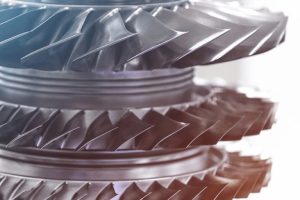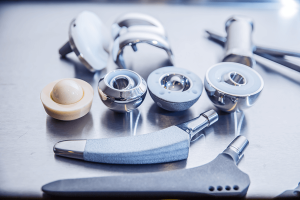
The variety of parts, components, and finished goods produced by the manufacturing industry is endless. It takes a wide variety of tools to make these products, and one of the workhorses in the industry is the machine tool, specifically 3, 4, and 5 axis CNC machine tools (Computer Numerical Control).
A machine tool is a mill, lathe, or even both that cuts, drills, grinds, or otherwise shapes a rigid substance. Depending on what you’re making and its complexity, different tools are needed. The intent in manufacturing is to produce parts to the quality and specifications required as efficiently as possible. This is where the machines movement on its axes comes into play. CNC machine tools come in 3, 4, and 5 axis CNC machine models. The more axes a machine tool has, the more complex the part can be. And, ideally, the less the operator must handle it, making the process more efficient.

3-axis CNC machine tools are the simplest. To picture the movement, imagine a block sitting in front of you. As the name suggests, a 3-axis machine tool works on three different axes, X, Y, Z. This translates to forward/backward, left/right, and up/down while the part is stationary. This 3-axis machine tool is most effectively used on two-dimensional machining since the tool can only cut one surface at a time. For example, making a perfectly square cube of metal would be no problem for a 3-axis CNC machine tool. After each pass on a surface, the part is removed and mounted in a different orientation to finish another side. The piece is repositioned six times to complete the cube, once for each side.
Next, there are 4-axes machine tools. In a 4-axis machine tool, the base rotates on the A-axis. By adding this extra axis, many new possibilities open up. Remember, in the 3-axis machine example, the block is repositioned for each side cut. In 4-axis machining, you can work four sides without repositioning the part because the base rotates. This saves not only time but reduces human error. With a 4-axis machine tool, the part is repositioned only twice, compared to six times with the 3-axis tool. More complex parts are now a possibility. Camshafts, for instance, would need to be machined on a 4-axis machine tool for their intricate variations in shape along the shaft. The time investment on a 3-axis machine would be incredibly high, making it impractical and expensive.

Finally, there are 5-axis CNC machine tools. These are the most hi-tech when it comes to CNC machine tools. Adding the 5th axis makes the machine tool extremely versatile and productive. The 5th axis is the C-Axis, which adds another rotation to the machine base. This means that there are two axes on the base (A and C) and three on the tool (X, Y, and Z). With this additional rotation, the machine tool can move like a human wrist, giving it a full range of precise movements. In addition, complex parts need 5-axis machining to make shapes that are impossible or too time-consuming on the lesser axes machine tools.
The 5-axis CNC machine tool goes far beyond the capability of 3 and 4-axis models. 5-axis CNC machine tools can make the intricately shaped curved parts that go into a human body. Knee replacements, for instance, are made using 5-axis machines due to the complexity of the part. Aerospace industries also use these machines to produce intricate parts for airplanes called blisks (both rotating disk and blade) because of their complicated geometry. 5-axis machine tools are the superior option for the most demanding parts.
The manufacturing industry is vast, and CNC machine tools are necessary to manufacture parts of all sizes. From simple blocks to complex blisks and joint replacements, there is a machine tool ideally suited for every application.
Successful CNC machining relies on the quality and reliability of machine tool parts. Any component inefficiencies have a significant effect on your overall operations. Setco sets the standards in the design, manufacture, and repair of precision CNC spindles, slides, milling heads, and other. components. Our skilled and experienced technicians can guide you through your CNC machining upgrades, boosting quality and efficiency.
Contact us today to learn more about our quality CNC machining components and services.